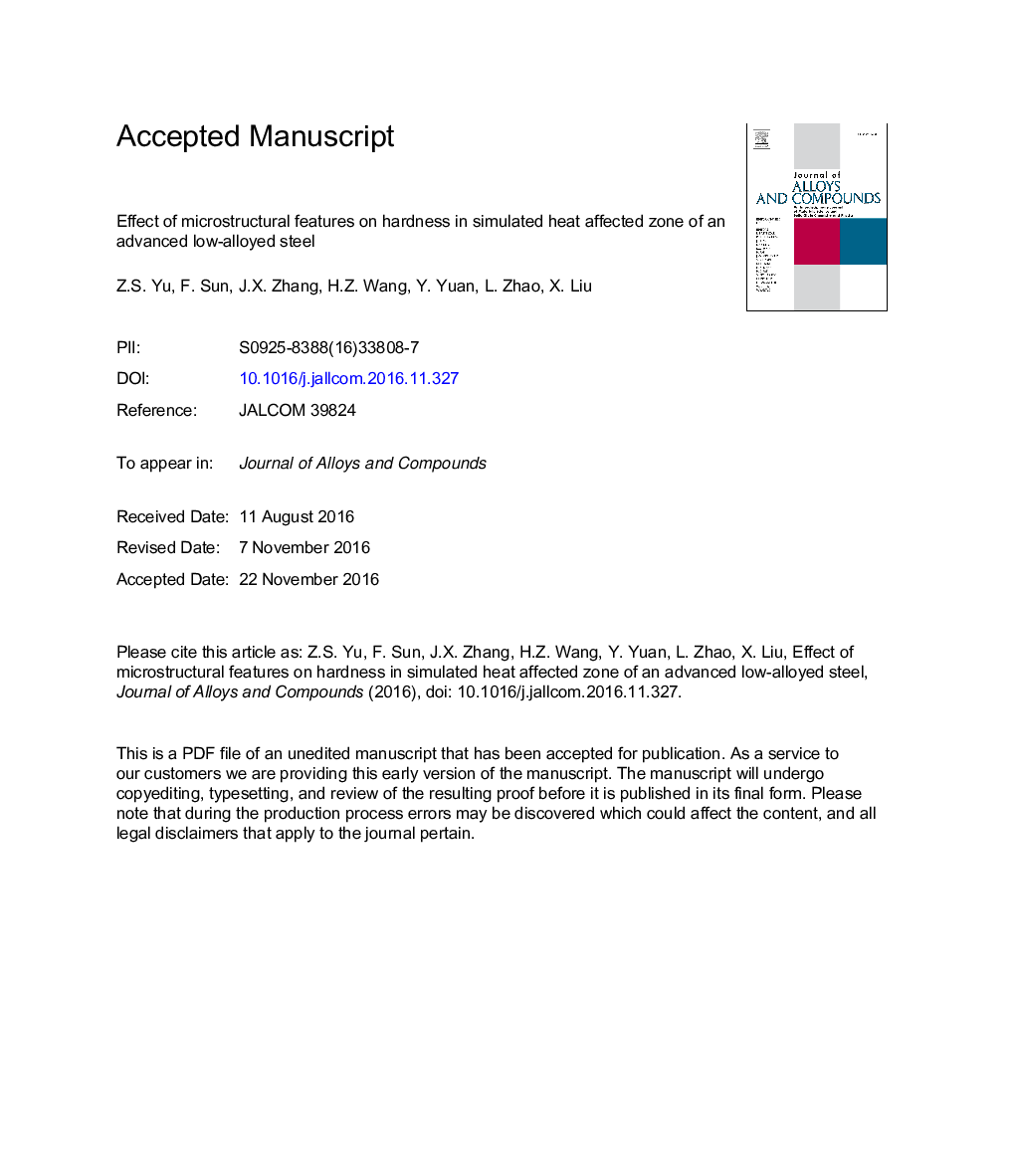| Article ID | Journal | Published Year | Pages | File Type |
|---|---|---|---|---|
| 5460616 | Journal of Alloys and Compounds | 2017 | 13 Pages |
Abstract
The low-alloyed creep-resistant T24 steel was designed as prospective material for membrane water walls in modern ultra-super critical power generation. In this study, T24 steel was subjected to welding thermal simulation. After simulation, short time thermal exposure at different temperatures was conducted to study the effect of microstructural evolution on related hardness in the simulated heat affected zone. The results of Vickers hardness tests measurements exhibit a slight decrease at 750 °C in base T24 steel. While, the hardness decreases obviously at 650 °C in the heat-affected zone after welding thermal simulation due to the carbide formation at the grain interior and coarsening at grain boundaries with the increasing thermal exposure time. At 750 °C, the coarsening of bainite lath in thickness direction occurs in base steel and heat-affected zone after welding thermal simulation. Detailed microstructure features at the grain interior and grain boundaries were investigated and analyzed.
Related Topics
Physical Sciences and Engineering
Materials Science
Metals and Alloys
Authors
Z.S. Yu, F. Sun, J.X. Zhang, H.Z. Wang, Y. Yuan, L. Zhao, X. Liu,
